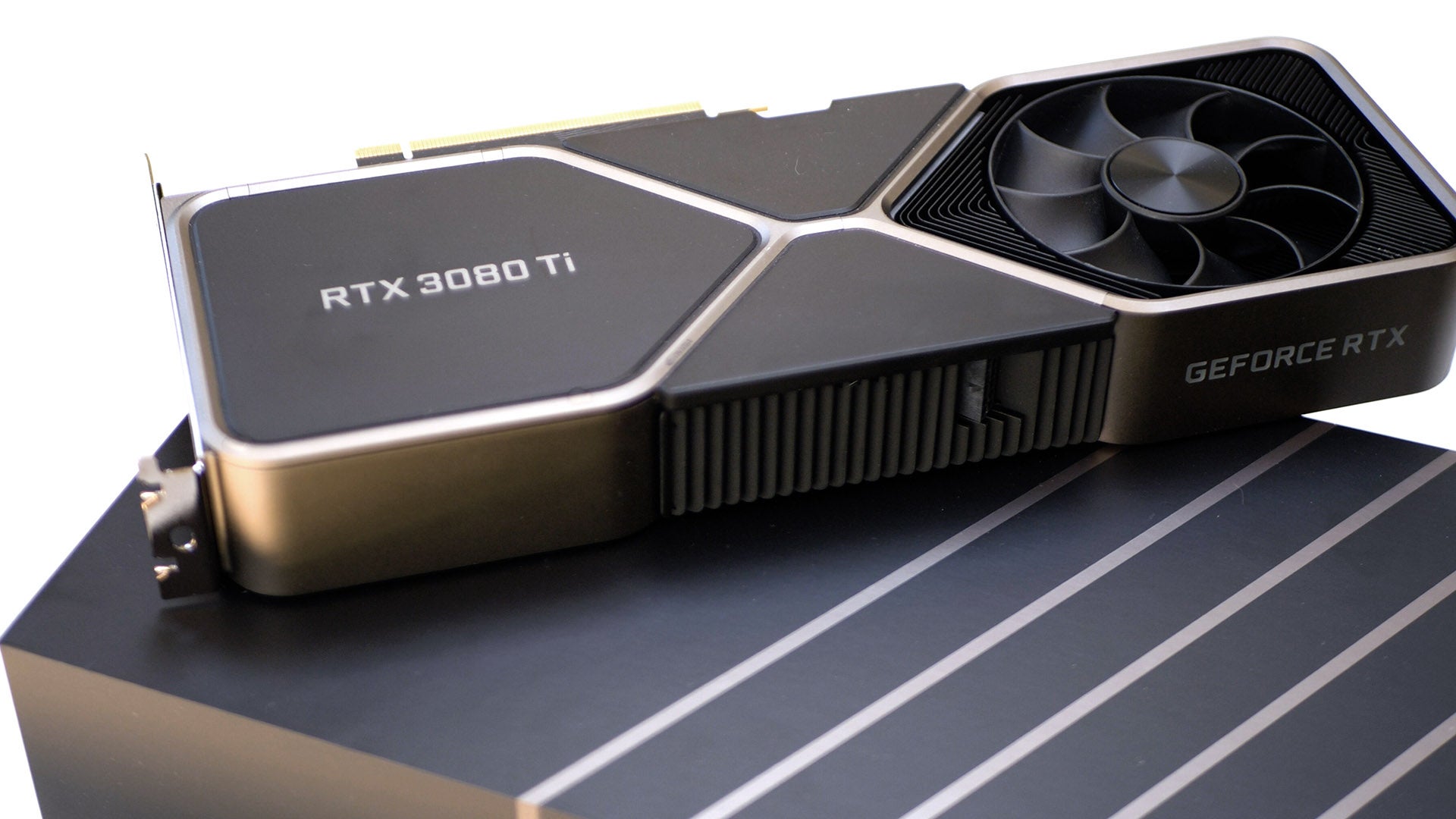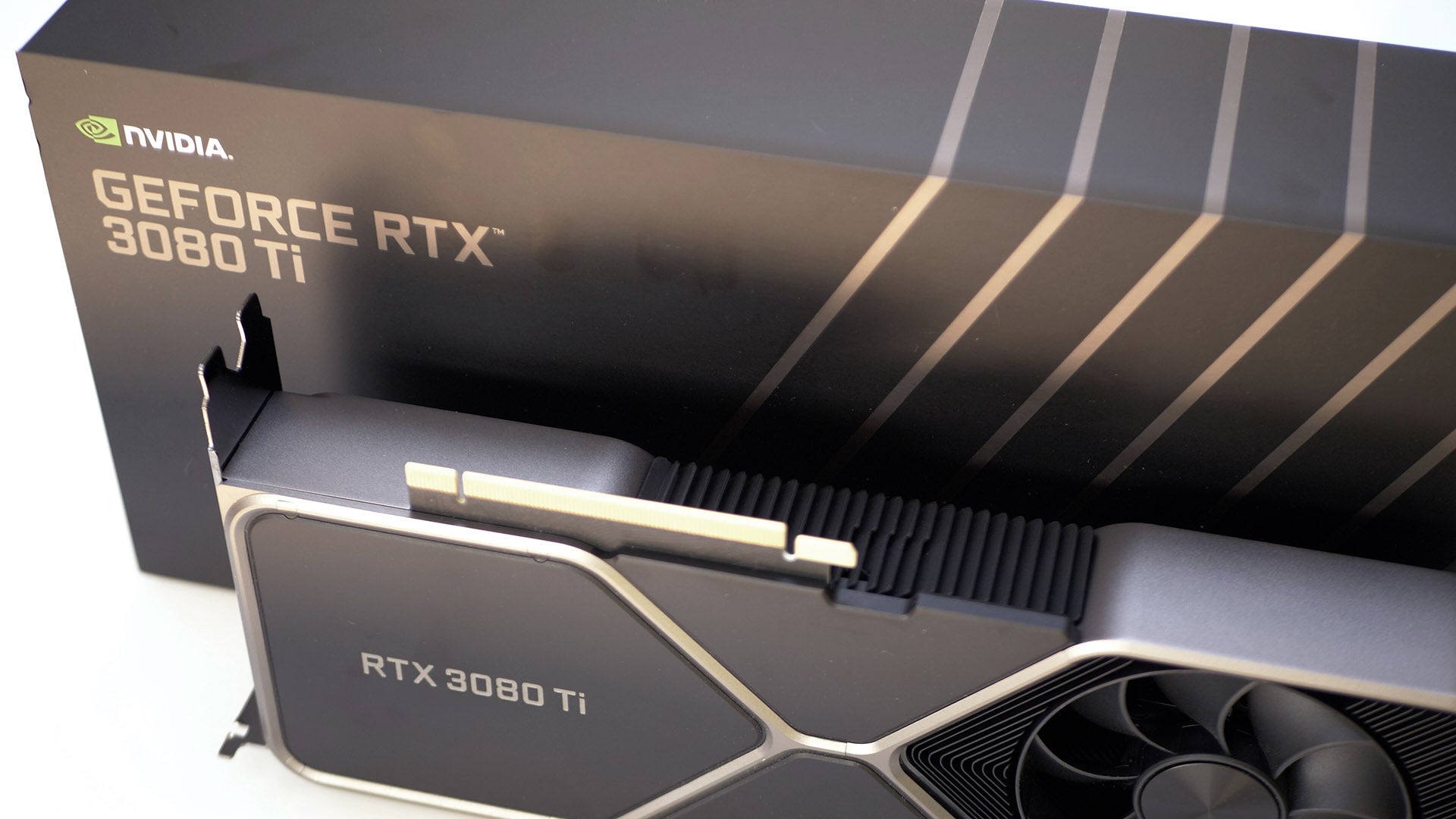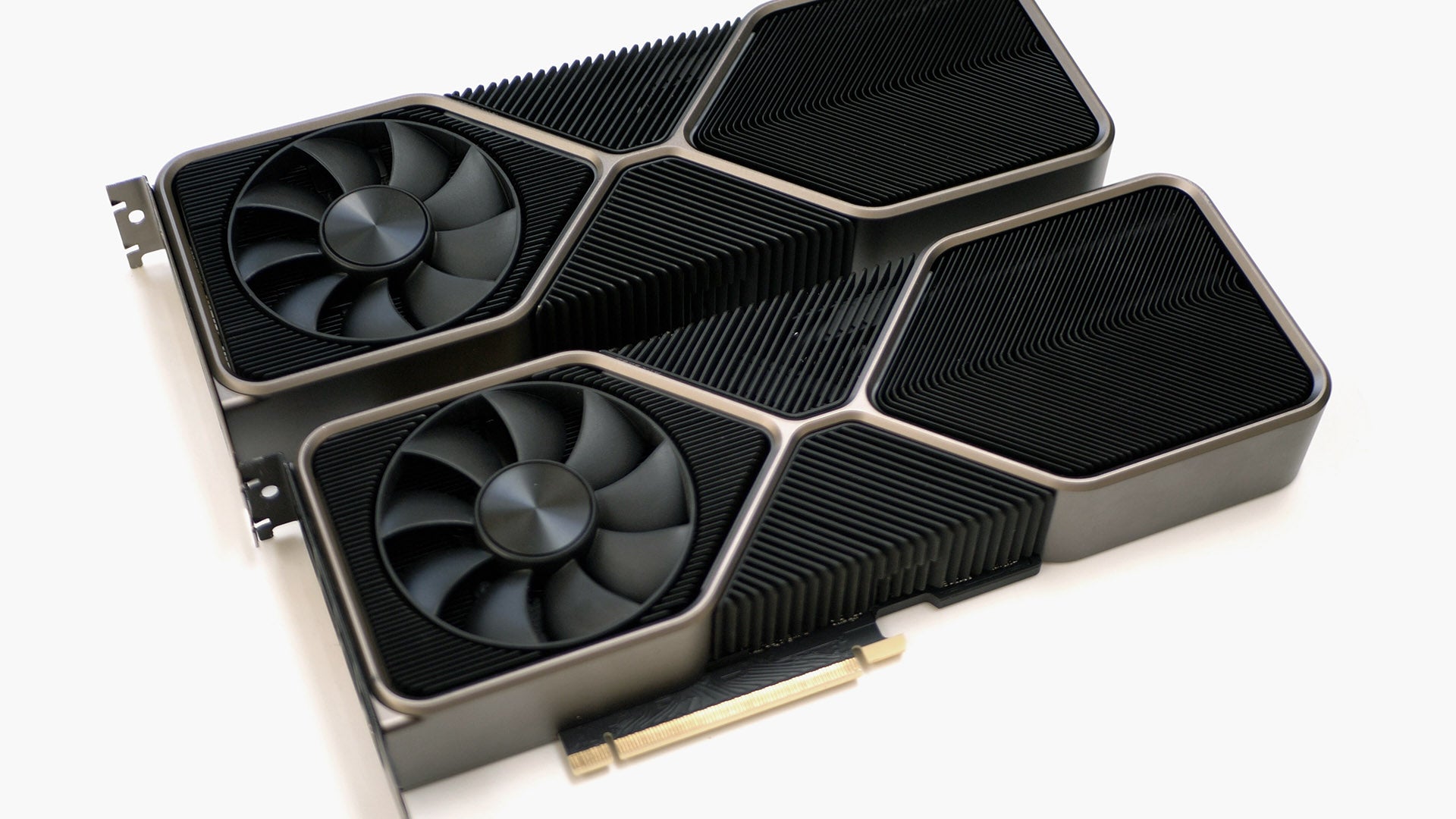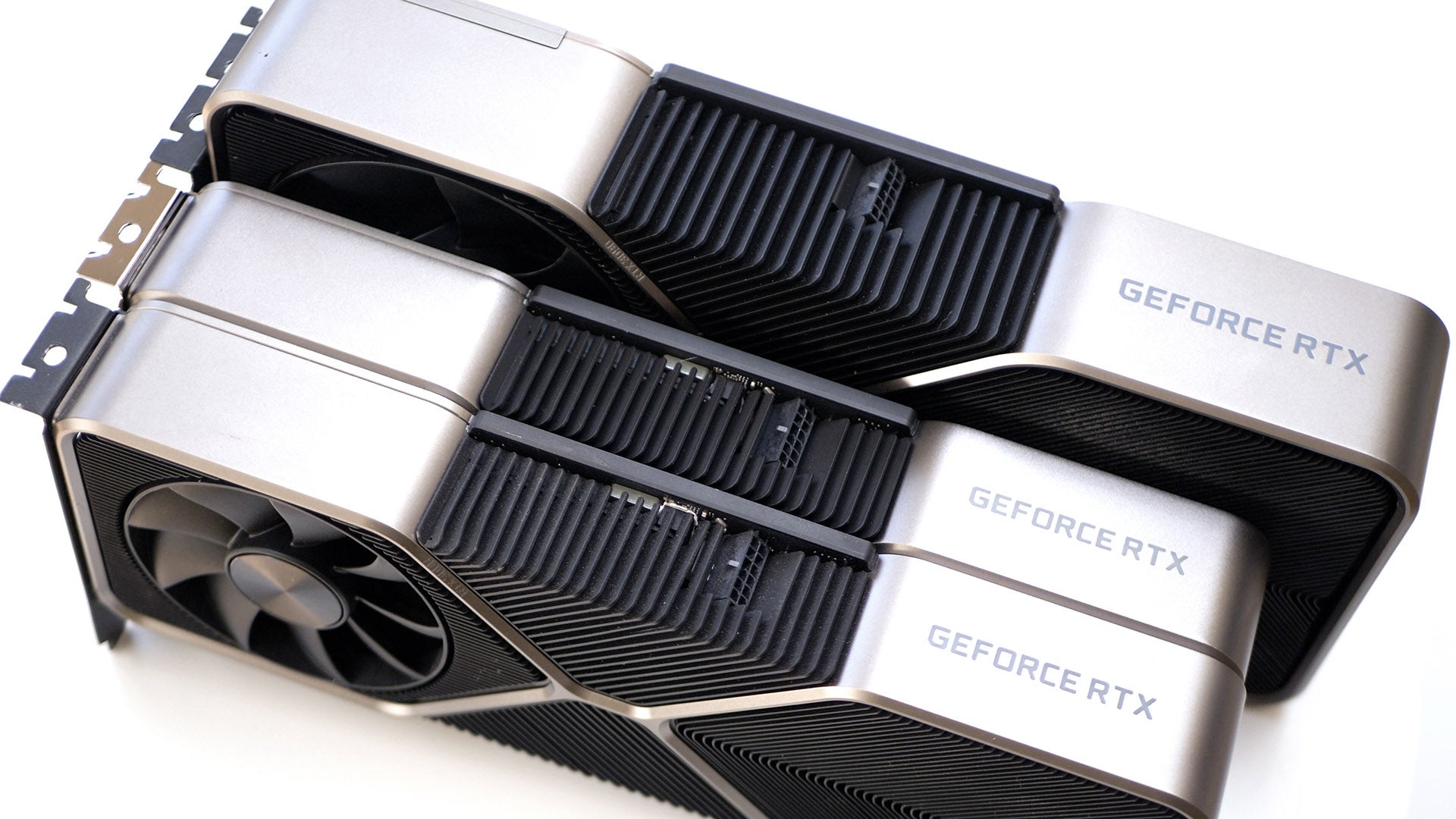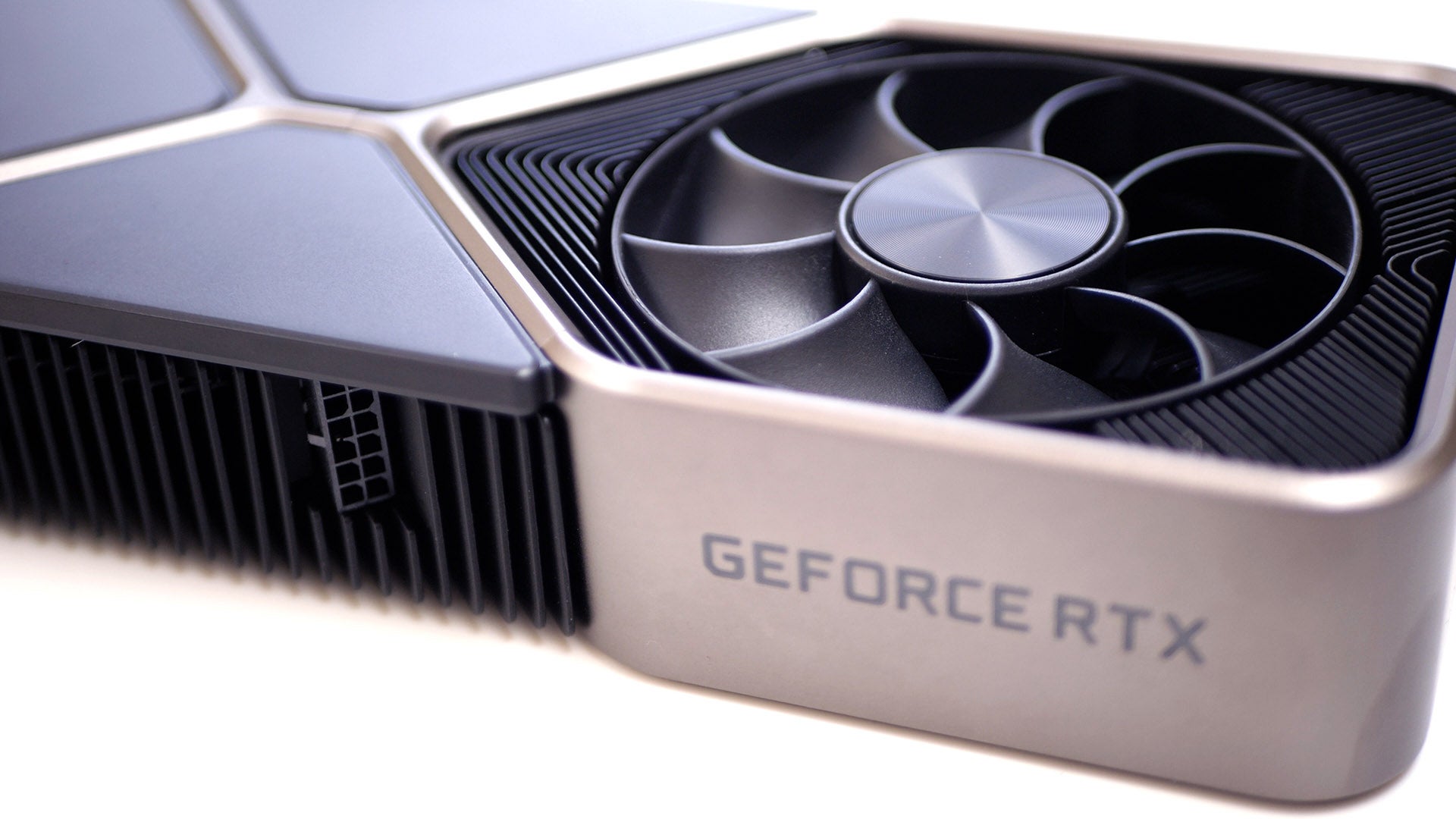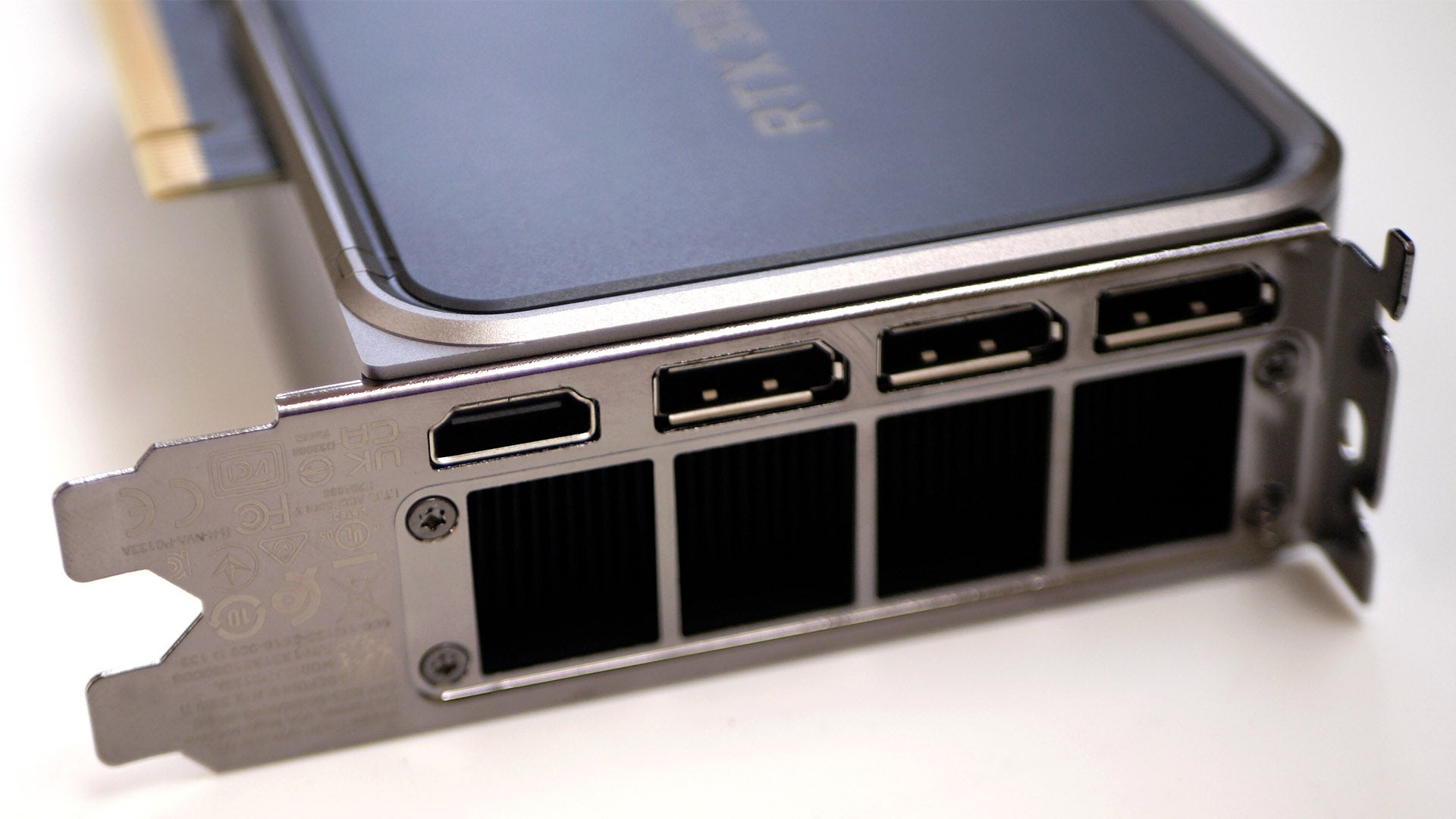Whether this translates into a flood of new high-end graphics cards remains to be seen, but in the here and now let’s take a look at how Nvidia’s new ($1200/£1050) flagship performs.
From the outside, the Nvidia GeForce 3080 Ti Founders Edition we’re testing looks nigh-identical to the original 3080 FE - same two-slot cooler, same 12-pin power input, same complement of DisplayPort and HDMI 2.1 ports and even the same colour - there’s just a sneaky ‘Ti’ suffix on the original RTX 3080 wordmark. Beyond that, the only difference is a traditional silver backplate vs the standard black on RTX 3080 and 3090. This makes the card feel more in line with an RTX 3080 than a unique model in its own right, but all of the really interesting stuff is found under the hood - as the specs place this hybrid card far closer to the full-fat RTX 3090 than the 3080 it outwardly resembles.
Doing the quick maths, the RTX 3080 Ti has nearly 98 percent of the shading hardware of the 3090, compared to the 83 percent possessed by the vanilla 3080. The Ti also possesses the full 384-bit memory interface of the so-called ‘BFGPU’, rather than the restrained 320-bit equivalent you’ll see on the 3080. Memory bandwidth is also boosted, with a full 20 percent advantage for the Ti over the original 3080.
The only big cutback? Total VRAM - you’re getting 12GB of fancy GDDR6X, two gigabytes more than the 3080 but still half that of the RTX 3090 24GB. That means AMD’s 16GB BIG NAVI cards continue their VRAM dominion over the new Nvidia flagship, but proud GTX 1080 Ti owners that don’t want to see a downgrade from their 11GB allocation at least have a new option to consider. (Realistically, a 384-bit bus only allows for 12GB or 24GB, depending on whether you use 1GB or 2GB NAND chips, so 16GB was never an option for the 3080 Ti anyway.)
To offset the relatively high SM count and higher power budget in a smaller chassis, the 3080 Ti operates at a slightly lower boost frequency than either the 3080 or the 3090. Nvidia’s official spec places this at 1665MHz, but in practice we saw higher figures thanks to an opportunistic algorithm that will continue to crank up frequency while power and temperature targets are being met. We spotted up to 1800MHz in Control and up to 1900MHz in Assassins Creed Valhalla - quite high but not quite equalling the other GA102 cards, so Nvidia’s guidance at least holds true in relative terms. Despite the lower clocks, the 3080 is rated for the same 350W TDP as the 3090, some 30W beyond the OG 3080, and that means the two-slot 3080-style design will need to run at higher fan speeds than the three-slot 3090. Whether that’s noticeable in day to day use could come down to your individual card - we had a look at two samples and one spun up loudly under load - Nvidia is investigating this card as we’re assured it’s not the norm.
Beyond the spec adjustments, this is an Ampere card through and through, with the usual third-gen Tensor cores, second-gen RT cores and streamer-favourite NVEnc encoders. The only real question that remains is just how this card performs compared to its closest competitors - both from Nvidia and AMD. We’ll be testing this Ti fighter against Navi cards big and small, plus past GeForce flagships like the GTX 1080 Ti and RTX 2080 Ti.
Our test set-up remains unchanged from our past GPU reviews, but here’s a quick summary if you’re just tuning in now. We settled on a Core i9 10900K system as this provided the best out-and-out gaming performance when current-gen GPUs launched back in 2020, backed with an Asus Maximus 12 Extreme Z490 motherboard, dual-channel G.Skill Trident-Z Royal DDR4-3600 CL16 memory and a 2TB Samsung 970 Evo Plus NVMe drive from Box. To keep our CPU performance constant, we’ve locked it to 5GHz on all cores and kept it cool with a 240mm Eisbaer Aurora liquid cooler.
Now that you’re familiar with our test bed and have a good overview of the cards themselves, let’s see if this RTX 3080 Ti screams.
Nvidia GeForce RTX 3080 Ti analysis
Introduction and hardware analysis [This Page] Doom Eternal, Control, Borderlands 3, Shadow of the Tomb Raider - Game Benchmarks Part 1 Death Stranding, Far Cry 5, Hitman 2, Assassin’s Creed Odyssey - Game Benchmarks Part 2 Metro Exodus, Dirt Rally 2, Assassin’s Creed Unity - Game Benchmarks Part 3 Resizable BAR benchmarks and requirements Control, Metro Exodus, Battlefield 5 - RT game benchmarks Nvidia GeForce RTX 3080 Ti - the Digital Foundry verdict
